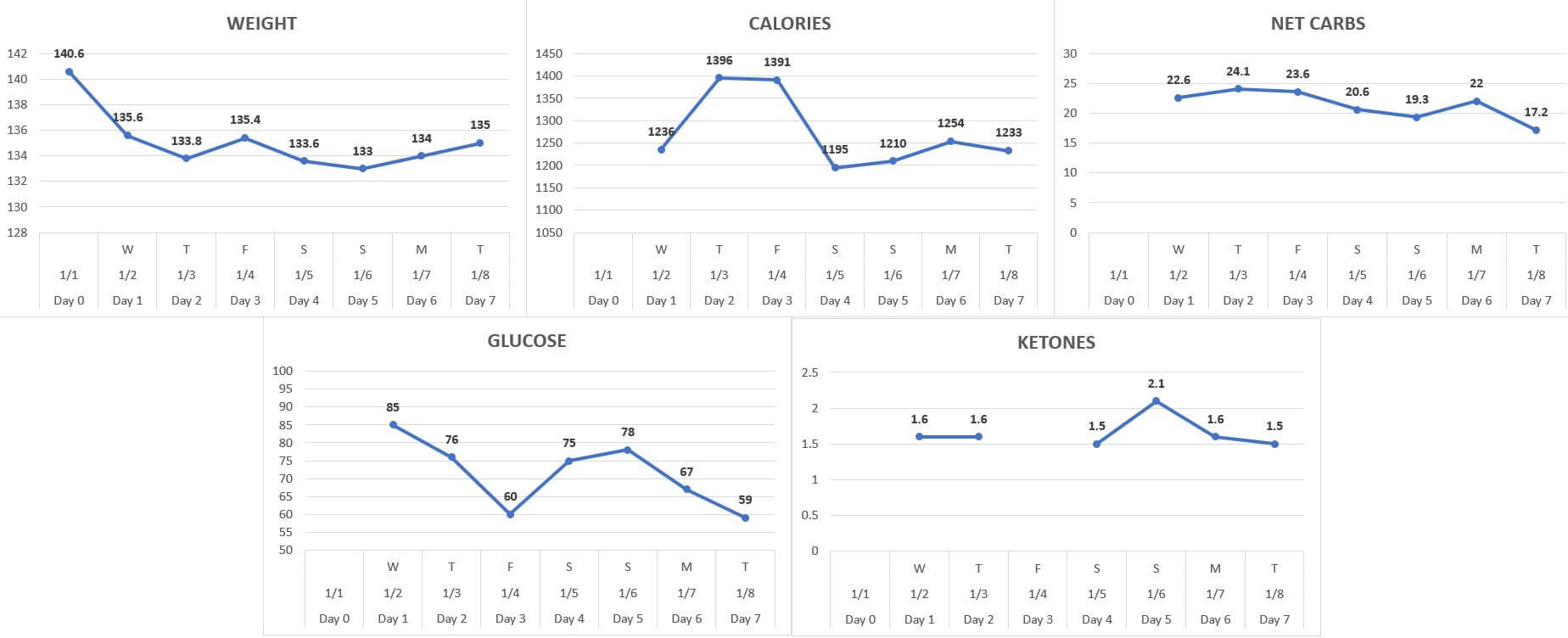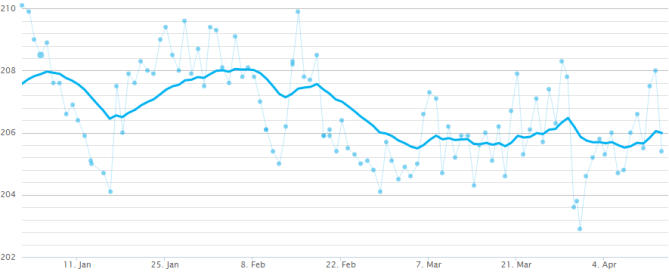Keto and Intermittent Fasting: A Beginner’s Guide
Amy Berger
Scrolling through keto social media, it would be easy to think that intermittent fasting (IF) is required if you want to eat keto. It’s not! But since they do go hand-in-hand so much, let’s take a closer look at IF and how to incorporate it into your life if you choose to.
What is intermittent fasting?
Intermittent fasting is just a fancy phrase for “going longer than usual without eating.” There’s nothing complicated about it. You just eat less often than you did before. People implement IF for different reasons, but it’s important to know that IF is different from extended, multi-day fasting or therapeutic fasting for medical reasons.
Something people commonly report after adopting a ketogenic diet—sometimes within days of starting—is that they’re less hungry. They don’t need quite as much food to feel full, and they can go longer between meals than they’re accustomed to. They skip meals here and there not because they’re intentionally fasting, but because they’re just not hungry. So IF often happens naturally without someone even deliberately trying. And when hunger does come on, it’s a gentle feeling rather than an urgent sensation that comes out of nowhere and demands that you cram something down your piehole immediately.
It’s not an exaggeration to say this freedom from constant hunger is life changing for some people. Being able to go several hours without even thinking about food can be liberating if you were someone who needed to snack every few hours or had to have an “emergency” candy bar stashed in your purse or briefcase when you were on a higher carb diet.
Why do you feel less hungry on keto?
Two main things are at work here. First, when you eat very few carbohydrates, your blood sugar stays steady and you don’t have wild fluctuations that cause you to feel irritable, shaky, light-headed, and hungry. (Some people call this “hangry”—the combination of hungry and angry. We’ve all felt it!) The signals that fat and protein send to your brain are very different from the signals carbs send—especially refined carbs.
The second reason people tend to feel hungry less frequently on keto is lower insulin levels. You might be used to thinking of insulin as a “blood sugar hormone,” but insulin does a lot more than lower blood sugar. One of its other jobs is to keep fat tucked away in fat cells. That’s right: insulin inhibits fat burning. Eating keto keeps your insulin level lower throughout the day, so your body has easier access to its fat stores. This means that even when you’re not consuming food, you’re “eating” your stored body fat! Your cells still have plenty of fuel available to them. Nice, huh?
How do you intermittent fast?
However you want to!
There are no hard-and-fast rules and there’s no right and wrong when it comes to IF. There are as many different ways to do it as there are people doing it. If you’re brand new to keto, it’s best to not do any IF at all for a while. Give your body time to adjust to going without carbs. Once you’re accustomed to being off the blood sugar roller coaster, the easiest way to start IF is simply to wait a little longer between meals. However long you used to go between meals, push it out an extra 30 minutes. Do that for a few days, then wait a full hour. Stretch the time out a little further every few days and before you know it, you’ll be an IF ninja.
Some people choose to implement a specific strategy for eating just one or two meals a day, sometimes based around an “eating window.” This is a window of time during which you have meals and you don’t eat outside that time frame. (You might choose to have coffee, tea, broth, sugar-free gum, or mints, but no food.)
Many people do 16:8. This means consuming meals in an 8-hour window and staying in a fasted state the other 16 hours of the day. This strategy typically means having two meals per day. (For example, having breakfast around 10am and finishing dinner by 6pm, or having lunch at noon and finishing dinner by 8pm.) Some people have an even smaller window, like 20:4—a 4-hour window during which you eat and 20 hours during which you fast. Other people find hunger so well-controlled and their appetite so reduced that they feel best eating just one meal a day. (You’ll see this abbreviated as OMAD on social media. It’s fine to do OMAD as long as you’re getting enough protein and nutrients in that one meal.)
Don’t let specific times of day or numbers of hours control you. If you intended to go 16 hours without eating but you’re ravenous at 14 hours, eat! It’s okay to have a shorter or longer eating window than you intended.
Fit IF around your life; don’t fit your life around IF
Should you skip breakfast or dinner? The morning meal or the evening meal? Do what works best with your schedule and your family dynamics. Some people find it easy to skip breakfast because they’re up and out of the house before the rest of the family is awake anyway. Or they can sit with their family and have a cup of coffee or tea while everyone else eats. Be flexible. If family dinner is important—the only time everyone gathers together on a daily basis—then you wouldn’t want to fast through dinner.
Maybe eating dinner works best on weekdays but on weekends you like to have a leisurely breakfast. Or you like sharing breakfast with your spouse during the week and going out for dinner on Saturday nights. Intermittent fasting is entirely customizable. The way you implement it might look very different from the way someone else does it, and that’s totally fine.
Be flexible on a daily basis, too. If you normally eat a meal or two early in the day and skip nighttime eating, or you restrict food in the early part of the day and skew your food later, it’s okay to change this up now and then. What if something unexpected comes up and you’re not able to consume your meal at the usual time? Maybe an emergency at work pulls you away from your normal mealtime, or you get called for an unexpected social event where it’ll look odd if you don’t eat anything. It’s okay to do things earlier or later than you had planned. There is zero black and white to this. It’s 100% customizable and you can change it up at any time.
IF in the real world
The custom of having three meals a day is completely artificial. Nothing about human physiology or metabolism suggests that you must eat breakfast, lunch, and dinner plus snacks in between. Don’t eat by the clock. Let your hunger—not the time of day—dictate when you eat. If keto controls your appetite so well that you’re only hungry for one or two meals a day, you don’t need to have three.
Intermittent fasting may be easier to do if you’re single and live alone. If you live with your family, it can feel a bit awkward if everyone is sitting down to a meal and you’re fasting. But it doesn’t have to be uncomfortable. You can join your family at the table and enjoy their company and conversation. Sip on coffee, tea, or some other noncaloric beverage if you like. You don’t have to eat just because others around you are.
And if you’re new to IF, don’t worry about whether it’s better to eat breakfast and lunch or lunch and dinner, or better to have two meals or one meal a day. The quantity and type of food you eat matters more than “when”. Intermittent fasting is really just a way to help your body flex its metabolic muscle and cruise along happily burning fat for a little longer between meals.




 What a week it has been! The beginning of the “butter phase” began Thursday evening when I prepared enough shakes to get me through the weekend because my fantastic husband was taking me away for a couple of days. Because Chris had generously
What a week it has been! The beginning of the “butter phase” began Thursday evening when I prepared enough shakes to get me through the weekend because my fantastic husband was taking me away for a couple of days. Because Chris had generously  I made three shakes of each of the following flavors (pictured left to right): Chocolate, Creamy Tomato Basil, and Savory Chicken Soup. All the shakes turned out beautifully! I was SO looking forward to tasting each of them – I honestly was ready for the two oil phases to end.
I made three shakes of each of the following flavors (pictured left to right): Chocolate, Creamy Tomato Basil, and Savory Chicken Soup. All the shakes turned out beautifully! I was SO looking forward to tasting each of them – I honestly was ready for the two oil phases to end.
 My first shake on Friday was the new flavor! You can almost see how appealing it looks in the photos I took. I could not decide which picture to add, so I am adding both! I have to say it is very exciting to have another savory option on the menu. (I can’t wait to try the Spicy Taco flavor that is also being developed.) My second shake of the day was Chocolate, and I was swooning over it! Creamy deliciousness has been returned to me! Did I warm it up the way I thought I would need to do for a shake made with butter? No way! That Chocolate shake looked all the same as a made-with-heavy-cream shake to me so I went for it with my straw. Ah-maze-ing!
My first shake on Friday was the new flavor! You can almost see how appealing it looks in the photos I took. I could not decide which picture to add, so I am adding both! I have to say it is very exciting to have another savory option on the menu. (I can’t wait to try the Spicy Taco flavor that is also being developed.) My second shake of the day was Chocolate, and I was swooning over it! Creamy deliciousness has been returned to me! Did I warm it up the way I thought I would need to do for a shake made with butter? No way! That Chocolate shake looked all the same as a made-with-heavy-cream shake to me so I went for it with my straw. Ah-maze-ing! Chris has reported that his
Chris has reported that his 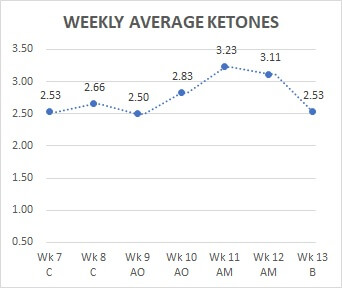
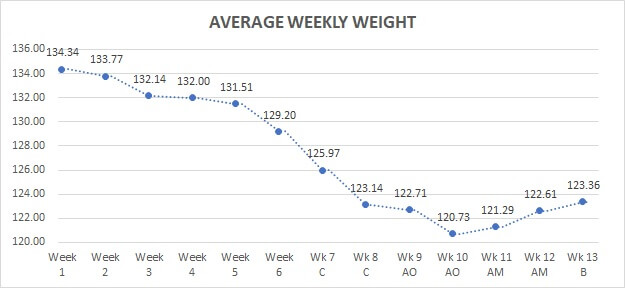

 I handed my mug of hot soup to my husband and made him try it first. I was still super hesitant – and I was willing to give my honest opinion here. But he liked it! So I had to take it from him and try it myself. After just a couple of sips, I added one bouillon cube which made it taste just right. We both really liked it! For what it’s worth, we decided that the flavor is “like warm milk with a hint of chicken” and agreed that this warm/savory meal option is a game changer. At that point though, it was only water, soup mix, and bouillon – I hadn’t added any fat. As I sipped on it, I tried to imagine if I would like it better with some cream or butter next time. This time though, I was adding cheese! :) If Chris can have cheese in his soup, then – by golly – so can I! I measured out 28 g shredded sharp cheddar (because that’s how much my calorie allowance permitted) and dumped it in. I have to say it was almost heavenly. After having only cold/sweet meals three times a day this entire month, I finally had a warm/savory meal in my hands. It was so good!! I never thought I would say this, but – I will actually be buying a 21-meal “week” package of this flavor. And I am excited to try the two new soup flavors that are currently being tested!
I handed my mug of hot soup to my husband and made him try it first. I was still super hesitant – and I was willing to give my honest opinion here. But he liked it! So I had to take it from him and try it myself. After just a couple of sips, I added one bouillon cube which made it taste just right. We both really liked it! For what it’s worth, we decided that the flavor is “like warm milk with a hint of chicken” and agreed that this warm/savory meal option is a game changer. At that point though, it was only water, soup mix, and bouillon – I hadn’t added any fat. As I sipped on it, I tried to imagine if I would like it better with some cream or butter next time. This time though, I was adding cheese! :) If Chris can have cheese in his soup, then – by golly – so can I! I measured out 28 g shredded sharp cheddar (because that’s how much my calorie allowance permitted) and dumped it in. I have to say it was almost heavenly. After having only cold/sweet meals three times a day this entire month, I finally had a warm/savory meal in my hands. It was so good!! I never thought I would say this, but – I will actually be buying a 21-meal “week” package of this flavor. And I am excited to try the two new soup flavors that are currently being tested!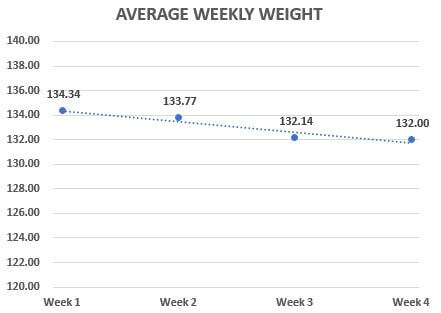 Slow weight loss can be unbelievably discouraging. I have no patience for just about anything. Results are important to see when I am working hard at something. When I weighed over 200 pounds, I lost and gained the same 30 (sometimes 70) pounds over and over. The weight loss was usually relatively quick then compared to what I am encountering now. Looking at my average weight per week, I have lost a little more than 2 pounds this month. That is a bummer – but – it aligns with the facts: female, short, middle-aged, desk job, sedentary. So I have to accept it. If I want the scales to move faster, I have to decrease my calories or increase my activity level. Since I am not currently willing to do either of those things, I will stay the course and see where it leads me.
Slow weight loss can be unbelievably discouraging. I have no patience for just about anything. Results are important to see when I am working hard at something. When I weighed over 200 pounds, I lost and gained the same 30 (sometimes 70) pounds over and over. The weight loss was usually relatively quick then compared to what I am encountering now. Looking at my average weight per week, I have lost a little more than 2 pounds this month. That is a bummer – but – it aligns with the facts: female, short, middle-aged, desk job, sedentary. So I have to accept it. If I want the scales to move faster, I have to decrease my calories or increase my activity level. Since I am not currently willing to do either of those things, I will stay the course and see where it leads me. The DietBet Challenge has ended. I enjoyed interacting with some other participants in the “activity” area of the “game”. Thankfully, I met the 4% goal with official weigh-ins of 140.6 and 134.2 (6.4 lbs lost). I want my $10 back. :) Actually, I want my $20 back – I signed my husband up too! He hasn’t done his final weigh in yet though so time will tell on the other $10. I really hope everyone who joined the challenge meets their DietBet goal. I saw this morning that there are two upcoming keto challenges listed in the DietBet games, and I am seriously considering joining both of those.
The DietBet Challenge has ended. I enjoyed interacting with some other participants in the “activity” area of the “game”. Thankfully, I met the 4% goal with official weigh-ins of 140.6 and 134.2 (6.4 lbs lost). I want my $10 back. :) Actually, I want my $20 back – I signed my husband up too! He hasn’t done his final weigh in yet though so time will tell on the other $10. I really hope everyone who joined the challenge meets their DietBet goal. I saw this morning that there are two upcoming keto challenges listed in the DietBet games, and I am seriously considering joining both of those.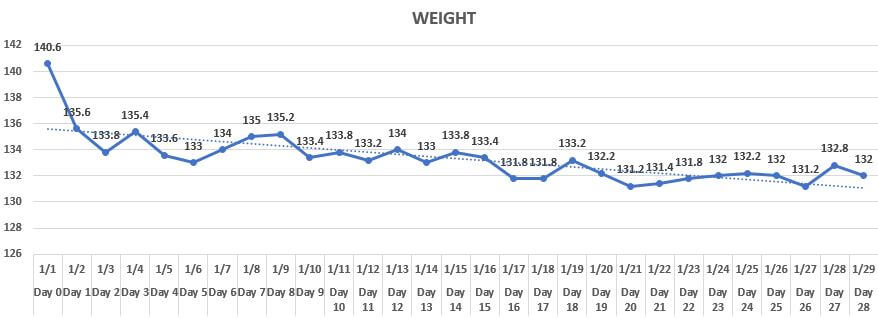
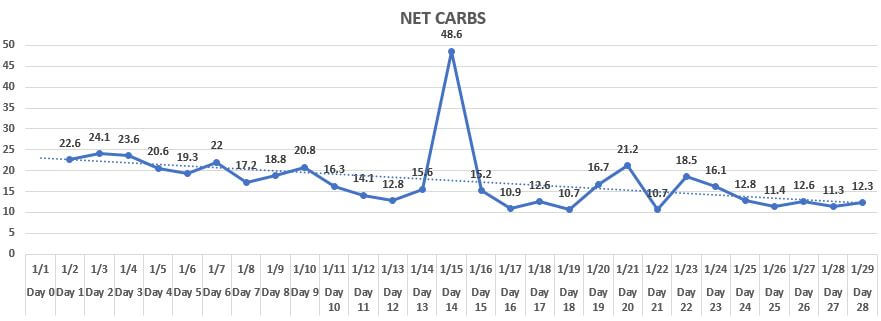
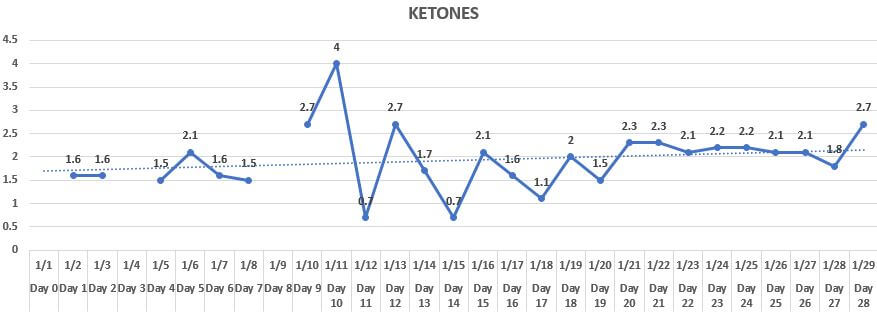
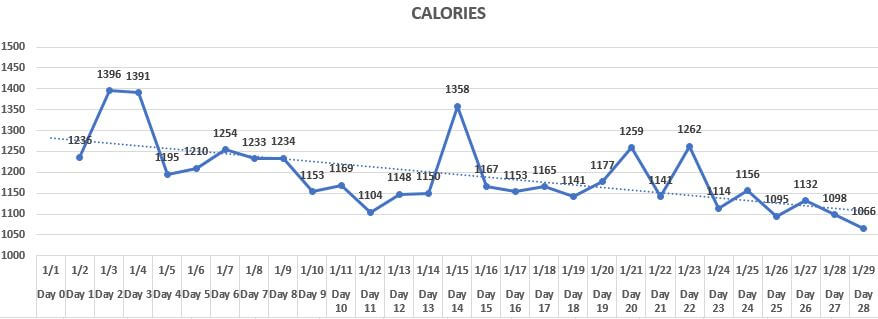

 Last Sunday, my husband chose his favorite local buffet for lunch. He is so supportive of me in this project, the least I can do is accompany him out to a restaurant once in a while. It’s not super-tempting to sit in a restaurant or at a meal with other people who are eating. But it’s not super-easy either. I’m not sure how to describe it. It’s certainly not fun, that’s for sure.
Last Sunday, my husband chose his favorite local buffet for lunch. He is so supportive of me in this project, the least I can do is accompany him out to a restaurant once in a while. It’s not super-tempting to sit in a restaurant or at a meal with other people who are eating. But it’s not super-easy either. I’m not sure how to describe it. It’s certainly not fun, that’s for sure.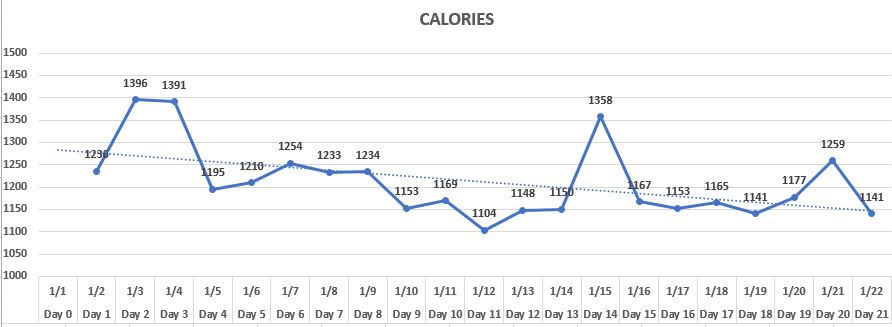
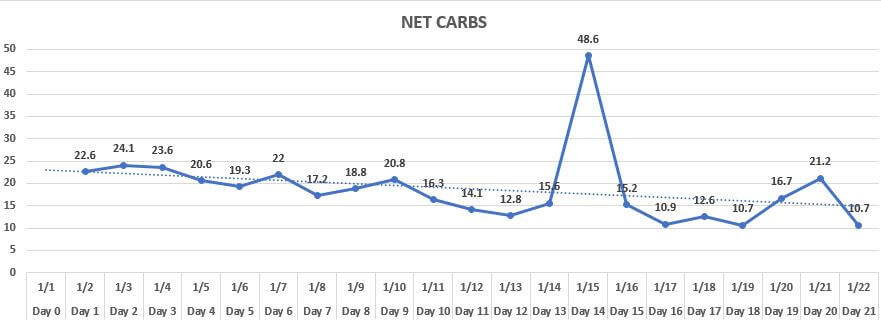
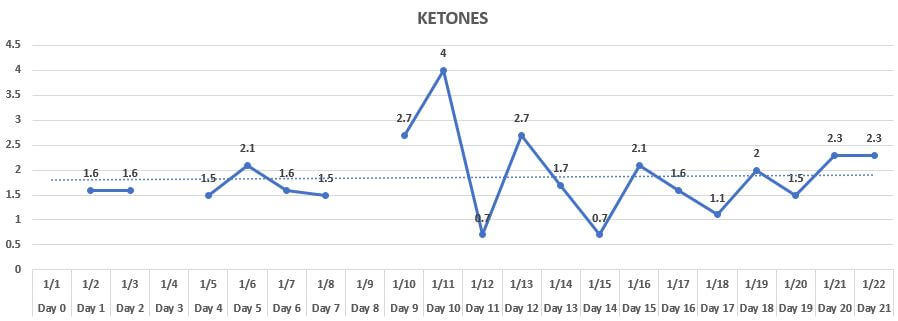


 Wanting more is something that makes this 100-day challenge (or any “diet”) difficult. Even though I have eaten enough, I sometimes really want to eat more. Food sounds good! I encountered an awkward situation earlier this week when a group of co-workers went out to lunch for one individual’s last day of employment. This co-worker is a friend so I wanted to go. Just as I saw when dining out last week, other people are more uncomfortable with the fact that I am not eating than I am – but I did not like having attention drawn to me.
Wanting more is something that makes this 100-day challenge (or any “diet”) difficult. Even though I have eaten enough, I sometimes really want to eat more. Food sounds good! I encountered an awkward situation earlier this week when a group of co-workers went out to lunch for one individual’s last day of employment. This co-worker is a friend so I wanted to go. Just as I saw when dining out last week, other people are more uncomfortable with the fact that I am not eating than I am – but I did not like having attention drawn to me.
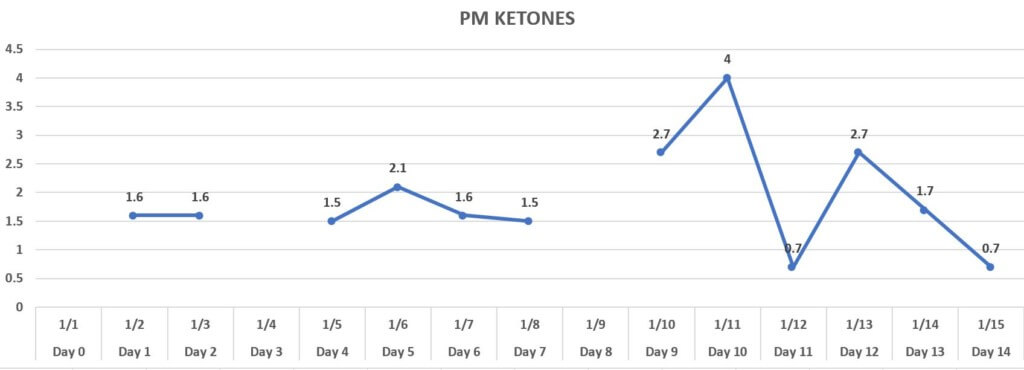
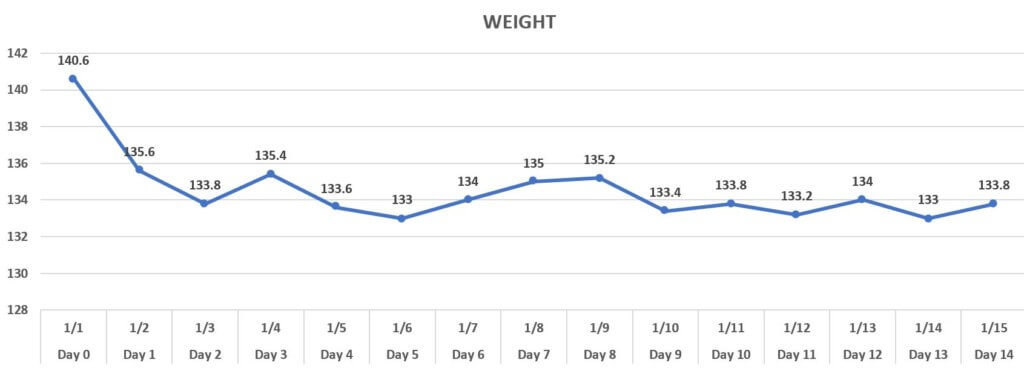
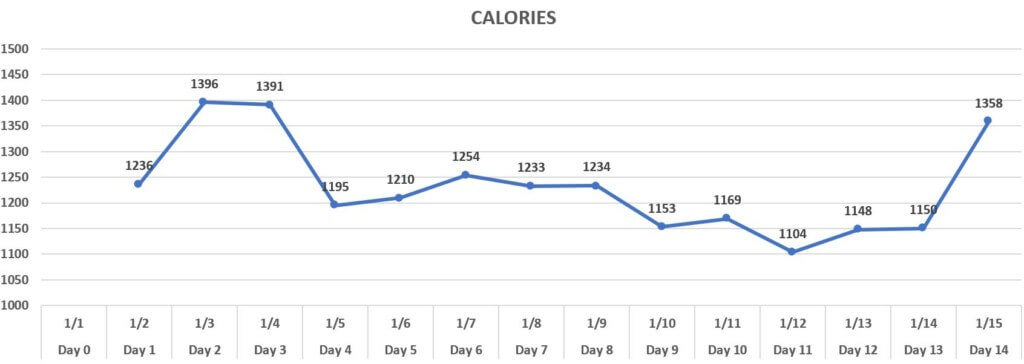


 We have been busy with a flooring project in our living room after some ceramic tiles buckled a few weeks ago. My amazing and hard-working husband did all of the difficult work but I did try to help a little bit. Have you ever had a dust storm occur inside your home? Let’s just say it is not fun but it has kept me occupied. And we now have a beautiful wood floor in that room.
We have been busy with a flooring project in our living room after some ceramic tiles buckled a few weeks ago. My amazing and hard-working husband did all of the difficult work but I did try to help a little bit. Have you ever had a dust storm occur inside your home? Let’s just say it is not fun but it has kept me occupied. And we now have a beautiful wood floor in that room. Something else I did differently on the second prep day is I poured the blender contents holding three shakes into four bottles and added more water to each one so I would perhaps feel like I was getting to eat (drink) more food each day by eating four times instead of three. I have mixed feelings on if that was successful or not. I like my shakes thick rather than thin so maybe sometime I will pour the equivalent of three shakes into four bottles but not add more water to each one. A challenge like this involves some experiments and small adjustments along the way.
Something else I did differently on the second prep day is I poured the blender contents holding three shakes into four bottles and added more water to each one so I would perhaps feel like I was getting to eat (drink) more food each day by eating four times instead of three. I have mixed feelings on if that was successful or not. I like my shakes thick rather than thin so maybe sometime I will pour the equivalent of three shakes into four bottles but not add more water to each one. A challenge like this involves some experiments and small adjustments along the way. My husband prefers avocado oil in his shakes plus he has different macros than mine. So I end up taking notes every time I make shakes, and I often re-check my math before I start the prepping process, which is never a bad idea. After our recent dust storm, I advised my husband that I would be adding some extra dust to his shakes for good measure. ;)
My husband prefers avocado oil in his shakes plus he has different macros than mine. So I end up taking notes every time I make shakes, and I often re-check my math before I start the prepping process, which is never a bad idea. After our recent dust storm, I advised my husband that I would be adding some extra dust to his shakes for good measure. ;)